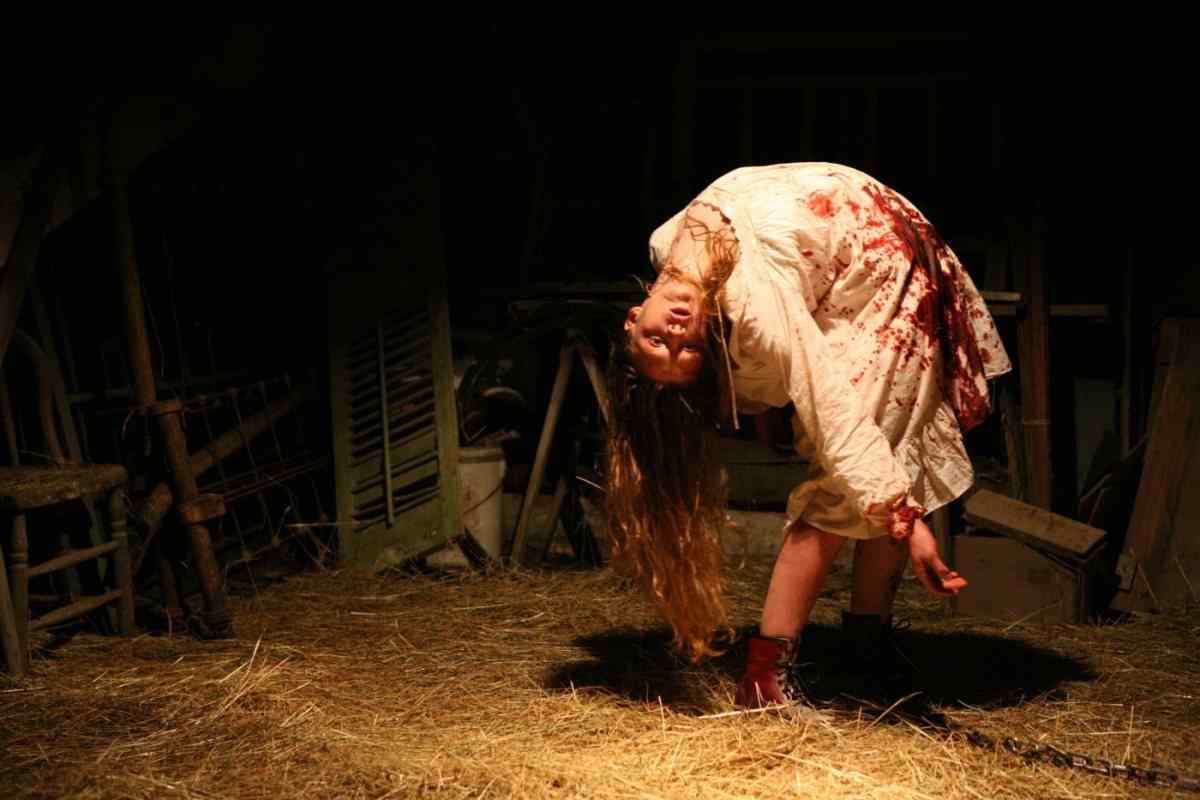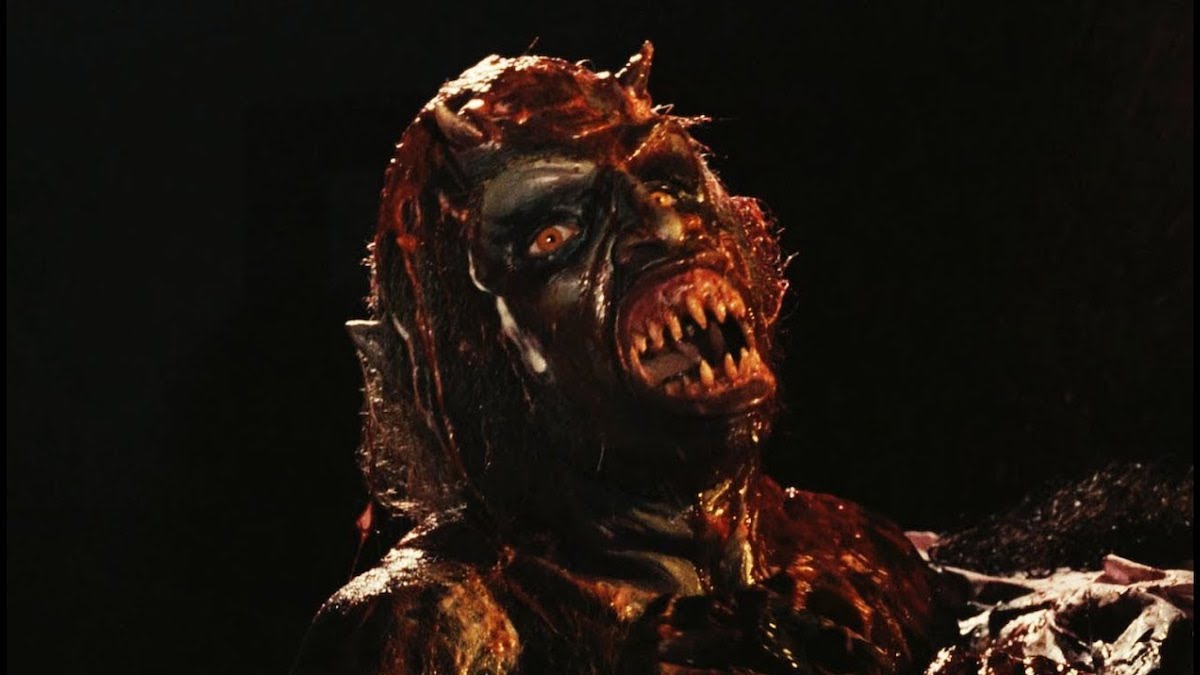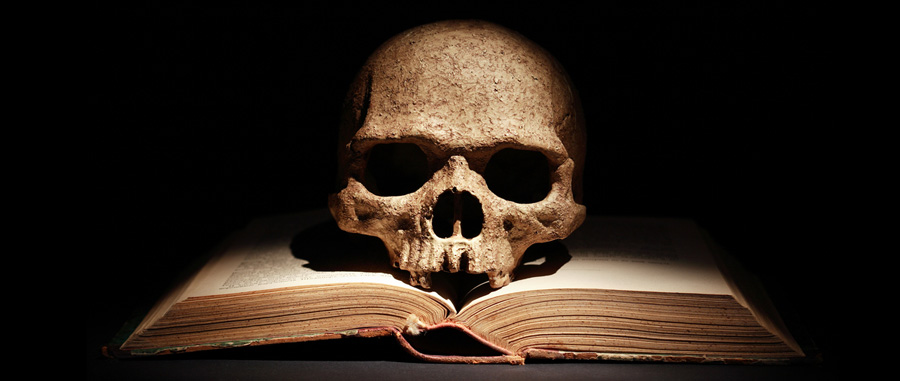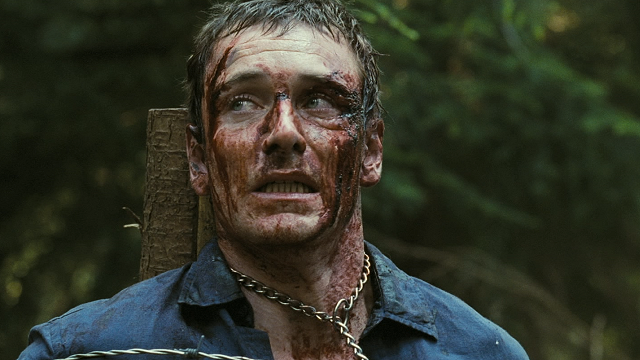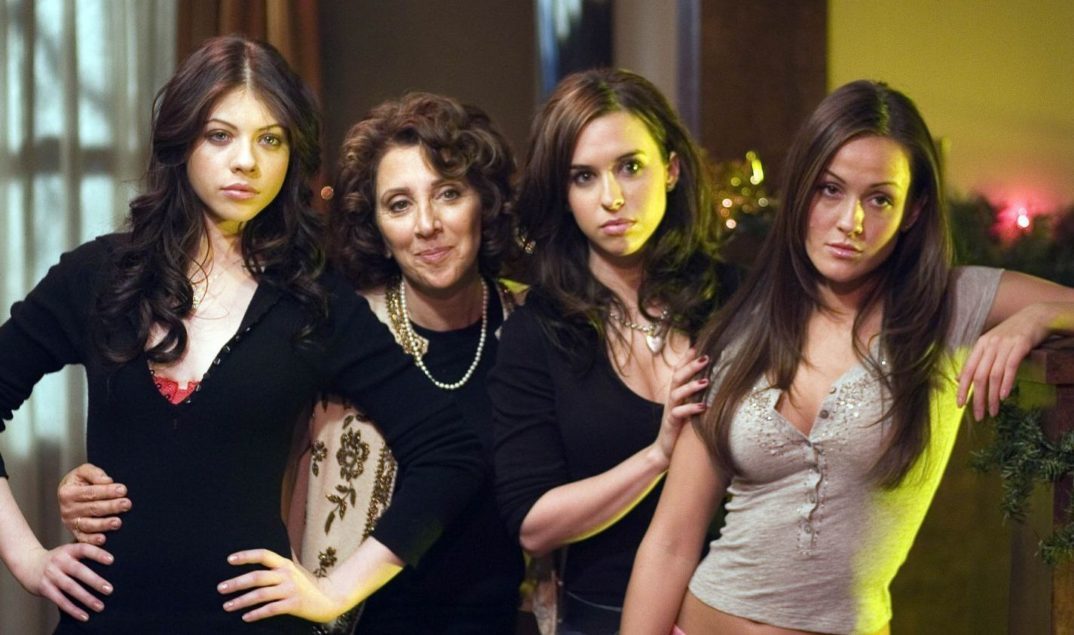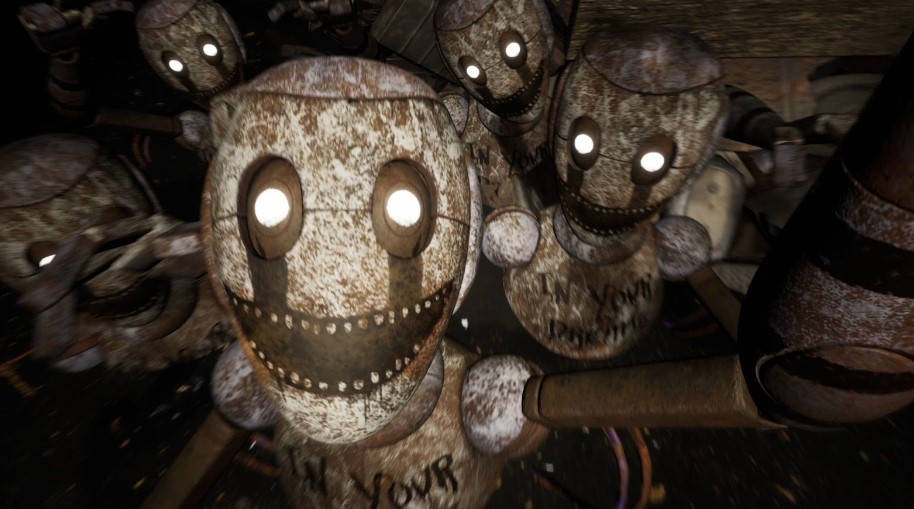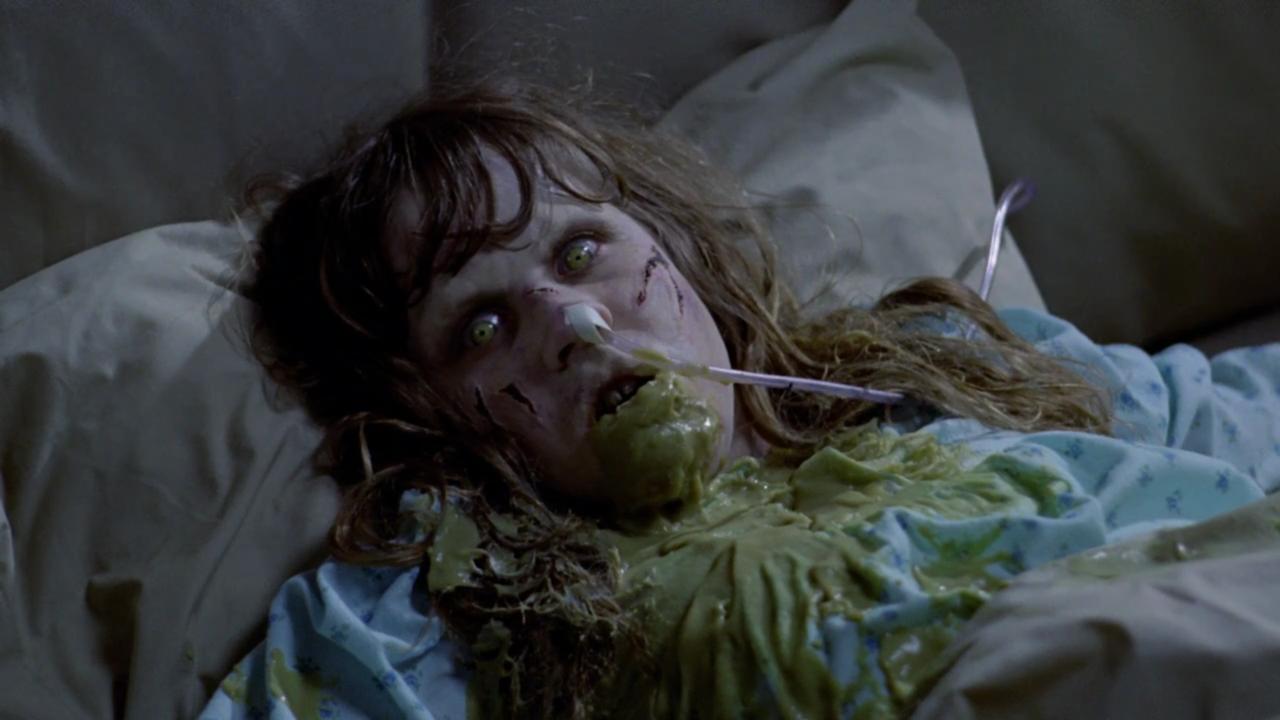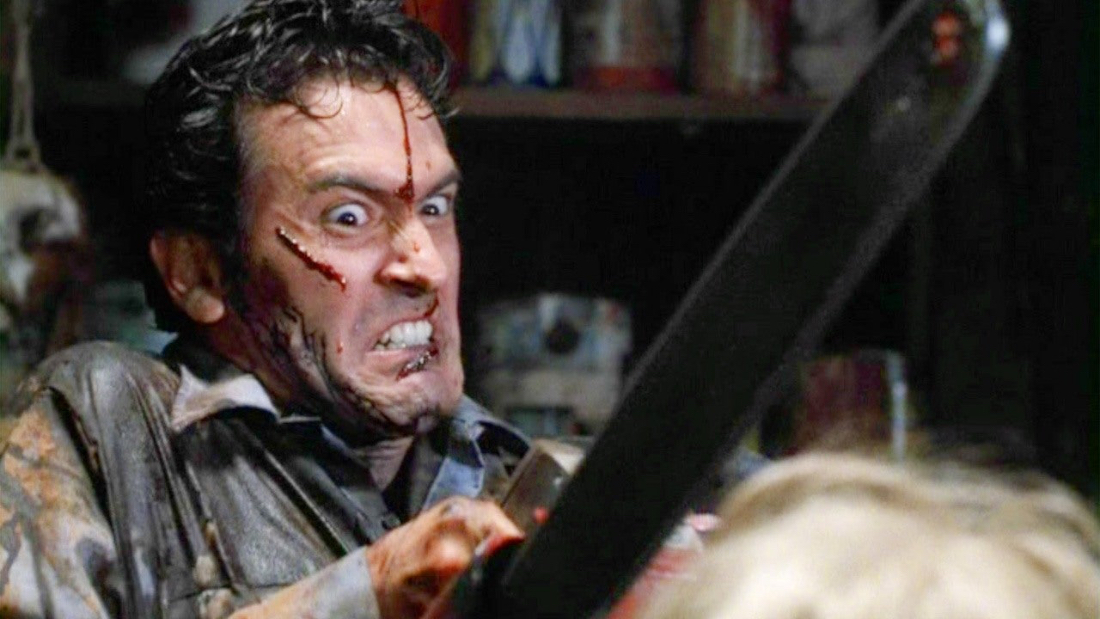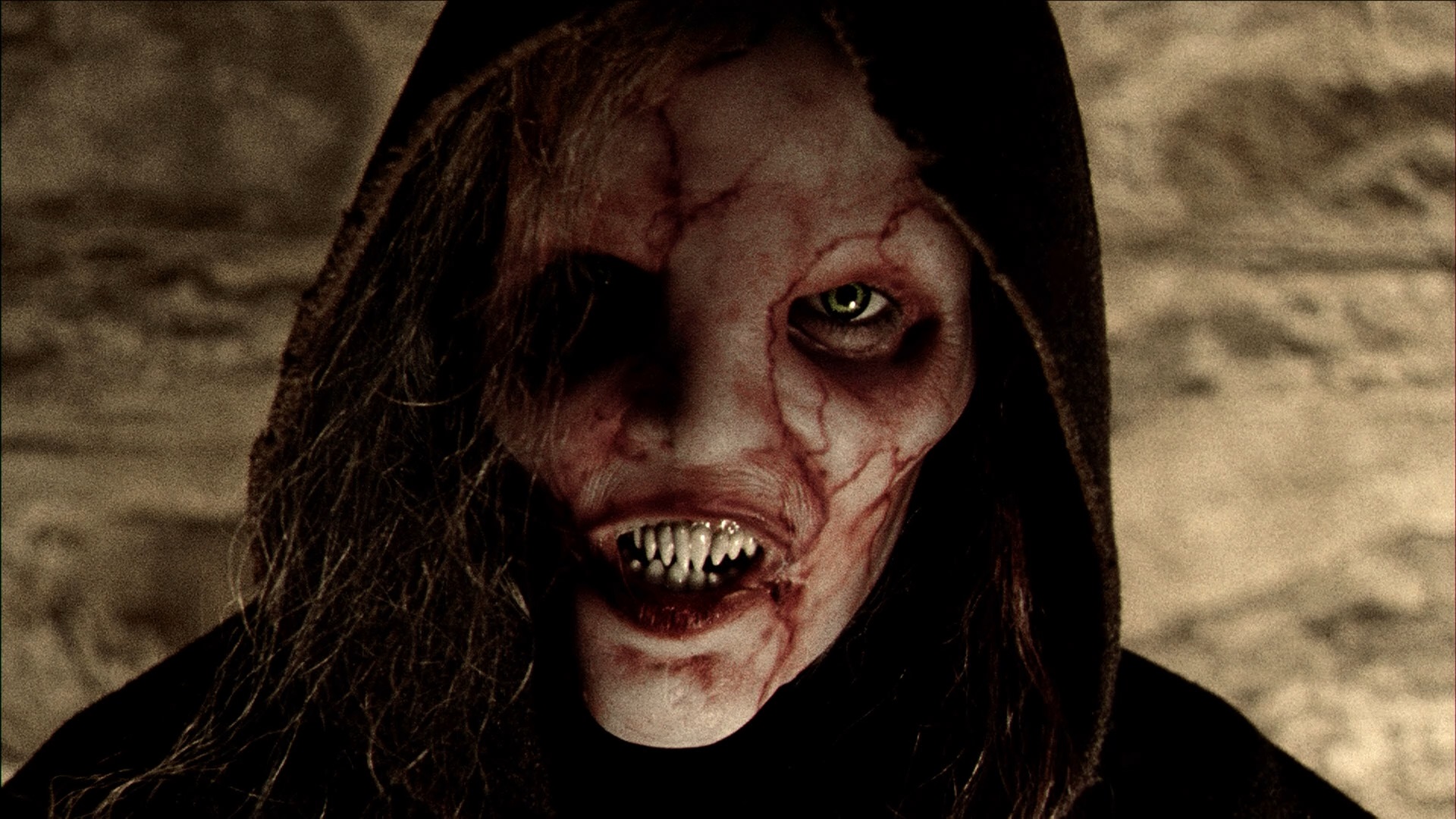
Looking for a subversive scare?
The horror genre has always been polarizing - often, the content of films and novels written in this niche can offend sensibilities and push boundaries that some would rather remain in place. The question has been asked over and over again for decades: how far is too far?
There are some films that should definitely be banned (I'm looking at you, Human Centipede) because they're violent or disgusting for the sake of being violent or disgusting, or they otherwise are exploitative of certain groups of people. But there are some films that were banned at the time of their release that still have artistic merit or that still bring up important conversations about human nature, society, or other topics. Here are the top 15 best horror movies that were banned.
15. Cannibal Holocaust (1980)
Trigger Warnings: Sexual violence, rape, dismemberment, extreme violence, cannibalism, animal cruelty
This early example of found-footage horror is so brutal that the director was actually put on trial in Italy after rumours surfaced that he had murdered cast members during filming. Cannibal Holocaust follows Harold Monroe (Robert Kerman), an anthropologist who has been tasked with rescuing a documentary film crew who went missing in the Amazon rainforest while making a film about local cannibalistic tribes. The only thing that the team manages to find is the film crew's footage, which depicts the horrors that the crew underwent at the hands of the cannibals.
While the film is brutal and filled with graphic mutilation, cannibalism, and rape, it is also a searing criticism of what is known as the "American cult of violence" - essentially, the way that the American news cycle makes horrific tragedies into entertainment. Critics often view this subtext as hypocritical considering the way the film is presented, but the conversation it starts can't be ignored. It's also unique as one of the first films to use the "found footage" plot that became mainstream with the release of The Blair Witch Project in 1999.
Immediately after Cannibal Holocaust premiered in Italy in 1980, it was seized by a local magistrate and the director, Ruggero Deodato, was arrested on charges of obscenity. Later, he would also face multiple murder charges and was forced to prove in court that all of his actors survived filming because of the film's realism. Even after Deodato was cleared of these charges, Cannibal Holocaust was banned in Italy, Australia, the UK, the US, Norway, Finland, Iceland, New Zealand, Singapore, and multiple other countries because of its depiction of graphic sexual assault and its genuine violence towards animals. Multiple animals were actually killed on camera for the film, including a pig, coati, turtle, and a squirrel monkey. While the ban has been lifted in some countries, it remains in others.
14. Land of the Dead (2005)
Trigger Warning: Extreme violence, sexual violence
This post-apocalyptic zombie flick takes place in Pittsburgh, Pennsylvania. The apocalypse has left humanity decimated, but outposts like Pittsburgh still allow those who remain to live in relative security, even if most are severely impoverished. But something is happening - the zombies are getting smarter, and the poor are starting to rebel against the plutocracy that rules Pittsburgh. The protagonist, Riley Denbo (Simon Baker) has been tasked by the ruler of Pittsburgh, Paul Kaufman (Dennis Hopper) to retrieve a zombie-proof armoured vehicle called Dead Reckoning. Denbo and his compatriots must fight through the criminal underworld of Pittsburgh and an army of intelligent zombies for a chance at freedom.
The film's most interesting aspects have nothing to do with the zombies - its critique of capitalistic society and the dangers of allowing the rich to run the world unchecked give it a deeper meaning than most of the gory zombie slashers that are released today. Its production and Romero's decision to release an uncut version also prompt conversations about exploitation and gore in filmmaking that have been debated by film scholars for over a decade.
Land of the Dead might sound like a run-of-the-mill zombie film by today's standards, but it caused quite a bit of shock amongst critics and ratings boards when it was released in 2005. The theatrical release and first DVD version were rated R in the US, but George Romero also released an Unrated version on DVD that includes more extreme gore, including a zombie tearing out a woman's belly button piercing on-screen. The film is rated 18A in Canada, it has a 15 certificate in the UK, an 18+ rating in Germany, and it is banned in Ukraine.
13. Hostel (2005)
Trigger Warnings: Extreme violence, torture, dismemberment, kidnapping
If you're interested in banned horror movies at all (and if you aren't, why are you here?
then you've probably heard about the mountain of controversy that Eli Roth's Hostel sits on top of. The film follows Paxton (Jay Hernandez) and Josh (Derek Richardson), who are college students travelling around Europe with their friend Oli (Eyþór Guðjónsson). After deciding to stay in a Slovakian hostel that is supposed to be filled with desperate women, the men end up kidnapped by a mysterious group that lets wealthy people pay to torture unsuspecting victims.
Hostel is filled with over-the-top torture porn scenes - its director, Eli Roth is credited with creating that particular subgenre of horror, so I suppose we shouldn't be surprised. However, it's also a critique of a world where you can get anything you want if you pay enough for it. Some call it a metaphor for consumerism, while others laud the film as a critique of what the rich are allowed to do unchecked to the less fortunate.
While the film received critical praise in the US, officials in Slovakia and the Czech Republic were not as thrilled. They were concerned that the portrayal of their countries as underdeveloped and uncultured would damage the tourism industry and make travellers think that Slovakia and the Czech Republic were too dangerous. Slovakia's tourism board even invited Eli Roth on an all-expense-paid trip through the country to prove that it wasn't as desolate as he portrayed it in the film. Roth refuses to entertain these worries, resulting in the ban of Hostel in Slovakia.
12. Freaks (1932)
Trigger Warnings: Mutilation, disturbing representations of persons with disabilities, sexual violence
While Freaks might not be as gory as some of the other entries on this list, its implications and some of its sequences place it firmly within the realm of the horrific. The plot follows a group of circus performers, many of whom perform in a "sideshow" as freaks. The leader of this group is Hans, who is a "midget" (the preferred term nowadays is Little Person). Even though he is engaged to another Little Person named Frieda, he falls under the spell of a conniving trapeze artist named Cleopatra, who plans to marry and murder him for his vast inheritance. When the rest of the sideshow performers find out about Cleopatra's plan, they mutilate her and put her on display, much in the same manner that they are displayed.
Despite its status as a box-office bomb when it was released in 1932, modern film scholars hail it as both a metaphor for class conflict during the Great Depression and a unique view on the sideshow that echoes sentiments from the anti-eugenics movement. The film is also praised for casting real disabled people to play the roles of the freaks, rather than using makeup or costuming to hire abled actors.
At the time of its release, however, Freaks caused uproar amongst its audiences - people ran out of test screenings, and a woman threatened to sue MGM because she believed that seeing the original film caused her to miscarry. Even after many of the film's most horrifying sequences were cut (almost 30 minutes of material was removed), the UK banned it, and it remained that way for 30 years. It was finally released with an X-rating in the UK in 1963.
11. Faces of Death (1978)
Trigger Warnings: Scenes of death, animal death, animal mutilation
Faces of Death doesn't really have a plot; it's more of an artsy mockumentary that includes both simulated and real scenes of death and destruction. It's narrated by a pathologist named Francis B. Gröss (Michael Carr) who states that he has become fascinated with life, death, and the transitional periods between them after being plagued with a recurring dream. The footage begins with corpses and animals killing each other, but quickly progresses into human deaths, serial murderers, executions, and other tragedies.
While this isn't your average horror movie and the subject might be more cerebral than what you're looking for, the film does raise some interesting conversations about the "cult of violence" that we mentioned in our discussion of Cannibal Holocaust. The film's production also raises questions about the ethics of using actual footage in horror movies - a scene of a fatal accident of a cyclist who was run over by a semi-truck was taken from authentic newsreels.
When it was released in 1978, Faces of Death was banned by numerous countries, though the "40+" number billed in the film's advertising is exaggerated. In the UK, it was determined to have violated the Obscene Publications Act 1959 and was banned until 2003, when it was released directly to DVD after 2 minutes and 19 seconds of cuts. It was also banned in Australia until 2007 after bootleg VHS copies were released in the country. New Zealand has also banned it, and this ban has not been lifted.
10. Mikey (1992)
Trigger Warnings: Violent children, graphic violence
Mikey is the terrifying tale of a 9-year-old psychopath who murders two foster families. After he fools the police into thinking that a stranger killed his first foster family, Mikey (Brian Bonsall) is placed with a second family. While he initially comes off as a sweet, normal child, his psychopathic traits start to manifest when he falls in love with his new friend's older sister, Jessie (Josie Bissett).
While the film isn't particularly gory or more disturbing than a lot of other films on this list, it was banned in the UK at the time of its release. The reason for this was timing - it was submitted for its video certificate to the British Board of Film Classification (BBFC) in 1993. At around the same time, the country was reeling from the horrific murder of a 2-year-old boy named James Bulger. His murderers? A pair of 10-year-old boys named Robert Thompson and Jon Venables, who kidnapped and killed Bulger for the simple reason that they could.
Mikey caused a lot of controversy amongst the decision-makers at the BBFC. The first reason was that, in the wake of James Bulger's murder, the film might have opened wounds that were still very fresh. The subject of a killer child, around the same age as the accused boys, was not something that the UK was ready for, not after the tragedy.
The second reason was that the media was in uproar about violent movies as a possible reason for Thompson and Venables' horrific actions - it was rumoured that they had been inspired to commit the crime after renting Child's Play 3. Under pressure from all sides, the BBFC was forced to ban Mikey in 1996. Today, it is available to stream on Amazon Prime in the UK, but it remains unrated by the BBFC.
9. The Island of Lost Souls (1932)
Trigger Warnings: Graphic violence, inhumane treatment of human subjects, medical horror
The Island of Lost Souls is the first non-silent film adaptation of The Island of Dr. Moreau by H.G. Wells. It takes place on a remote island in the South Pacific, where Edward Parker (Richard Arlen) has been sent after fighting with the drunken captain of a freighter carrying animals to the island. The island is strange - the only humans on it seem to be Dr. Moreau (Charles Laughton) and Lota (Kathleen Burke), an attractive if odd young woman who is later revealed to have been created from a panther by Moreau. As Parker spends more time on the island, he discovers that Moreau has been making animal-human hybrids in order to "advance the evolution of man."
While this film was passed by the pre-Code era Hayes Office, it was rejected in no less than 14 US States because of a single line - "Do you know what it means to feel like God?" The statement was described as profane, and many didn't like that the film seemed to fully accept the then-controversial theory of evolution.
The film didn't do any better in the UK - it was examined and banned three separate times by the BBFC. The first was due to scenes of vivisection, the second an objection to the scene where Moreau is dismembered alive by the beastmen, and the third time was in relation to "Do you know what it means to feel like God?" again. It was also banned in Sweden and Denmark. Oddly, it was only half-banned in Australia - white viewers were allowed to see it, but Aboriginal Australians were not.
8. Possession (1981)
Trigger Warnings: Sexually disturbing, self-harm, mutilation
Possession begins in an unlikely place for a horror movie - with a divorce. Mark (Sam Neill) is an international spy whose wife, Anna (Isabelle Adjani) asks him for a divorce after he returns from an espionage mission in West Berlin, though she refuses to tell him why. As Mark attempts to find out what's causing his wife's odd behaviour, he discovers that she's been in a strange relationship with an otherworldly tentacled creature she's been keeping in a derelict apartment, secret from everyone she knows.
While it's sexually and emotionally disturbing, Possession brings up a lot of interesting points about marriage, compatibility, psychosis, and ego. The motif of the doppelganger that appears throughout the film brings in the idea of putting on a mask, projecting ideals overtop of turmoil.
The body-horror flick was immediately placed onto the UK's "video nasties" list, resulting in a ban. In the US, it could only be released after almost a third of its runtime was cut, stripping it of all its subtext and leaving it as a gory romp with no plot or substance.
7. The Evil Dead (1981)
Trigger Warnings: Rape, gore, dismemberment
The Evil Dead is one of the original "cabin in the woods" slashers whose plot elements and aesthetics have been copied, parodied, and improved over the years. The film follows five university students who are vacationing in a remote cabin in rural Tennessee. Ash (Bruce Campbell) and Scott (Richard DeManicor) find a copy of the Sumerian Naturom Demonto and a tape recorder in the cellar of the cabin - when they play the tape, they discover that it's filled with incantations that resurrect a demon. The students must fight for their lives against a creature that can possess them and even resurrect them from the dead.
If you're a horror movie buff at all, you're probably familiar with The Evil Dead. Ash Williams, the series' protagonist, has status that rivals figures like Freddy Krueger and Jason Voorhees and has appeared in all of the sequels and the 2015 TV series. Stephen King (yes, that Stephen King) has stated that The Evil Dead is one of his favourite movies - high praise for an 80s slasher, if you ask me.
While The Evil Dead was a huge blockbuster in the US, grossing over $108 000 in its opening weekend, the UK censors were harsher. Like pretty much every other film on this list, it made the UK's "video nasties" list, and while it wasn't outright banned, it received an X-rating in the UK.
6. I Spit On Your Grave (1978)
Trigger Warnings: Rape, gang rape, sexual violence, mutilation, torture, gore
Jennifer Hills (Camille Keaton) has just rented an isolated cottage in Connecticut so that she can write her first novel. She quickly catches the eye of four men in the area, who decide to stalk, abduct, and rape her violently. She survives the brutal attack and embarks on a ruthless quest for revenge, killing and mutilating the men that traumatized her.
While this film doesn't contain anything that would usually offend censors other than its overt sexual violence, it immediately enraged critics. Roger Ebert referred to it as "a vile bag of garbage...without a shred of artistic distinction." He was joined in his sentiment of calling I Spit On Your Grave "the worst film ever made" by Gene Siskel.
However, later critical reviews reappraised the film as "feminist wish-fulfillment" and took into account the director's intention behind making the film. It's now thought of as a reaction to frequent horrific violence against women, and many critics note that the film cheers Jennifer on throughout. It may still be exploitative, and it definitely brings up problematic conversations surrounding vigilantism, but it holds undeniable power, even over modern audiences.
5. Antichrist (2009)
Trigger Warnings: Sexually disturbing, sexual violence, sadomasochism, death of a child, disturbing images related to animals, self-mutilation
This experimental horror film focuses on an unnamed couple (played by Willem Dafoe and Charlotte Gainsbourg) who are struggling with the death of their toddler. They decide to retreat to a remote cabin to deal with their grief, though strange, disturbing things immediately start happening upon their arrival.
Antichrist is a lot to take in - it's filled with sexual violence, disturbing imagery involving animals, and self-mutilation. Much of the film was inspired by director Lars von Trier's hospitalization due to a depressive episode, and its themes are directly related to trauma, mental illness, and psychosis.
Antichrist premiered during the Competition part of the 2009 Cannes Film Festival, and many walked out and at least four people fainted due to its explicit violence. While it hasn't been explicitly banned by any country, it barely passed the qualifications of the BBFC and was severely criticized. Von Trier never even submitted Antichrist to the Motion Picture Association of America (MPAA), leaving it unrated in the US.
4. The Last House on the Left (1972)
Trigger Warnings: Rape, gang rape, sexual violence, torture, exploitation
The Last House on the Left begins with a pair of teenage girls, Mari (Sandra Peabody) and Phyllis (Lucy Graham) trying to go to a concert. On their way, they are set upon, gang-raped, tortured and murdered by a group of degenerate criminals who have recently escaped from prison. Afterwards, the group masquerades as travelling salesmen at Mari's family home. Once her parents find out what happened to their daughter, they decide to enact bloody revenge upon her killers.
This film is brutal - it's filled with gore and sexual violence that can shake even the most hardened of horror movie buffs. It's the first film ever directed by Wes Craven, so we should have expected it to be over-the-top. Film scholars do find its take on the "rape-revenge" genre interesting, especially with its involvement of the victims' loved ones enacting revenge rather than the victim themselves. Much like I Spit On Your Grave, The Last House on the Left raises some interesting conversations about vigilantism.
While The Last House on the Left passed the MPAA with an R-rating, it was frequently cut or destroyed by theatre projectionists and horrified moviegoers. In the UK, it was refused a certificate by the BBFC and landed on the "video nasties" list in 1982. It was again refused a certificate in 2000 and 2002 - it wasn't classified uncut for video release in the UK until 2008. It was never distributed in Australia, simply because the country's censorship laws would have made it impossible.
3. A Clockwork Orange (1971)
Trigger Warnings: Drug abuse, extreme violence, rape, sexual violence, aversion therapy, suicide
A Clockwork Orange chronicles the life of Alex (Malcolm McDowell), an antisocial thug who runs a small gang and revels in theft, rape, and "ultra-violence." After he is imprisoned for murdering an elderly woman during a robbery, Alex is selected to undergo the nightmarish "Ludovico Technique", a form of aversion therapy that leaves him psychologically damaged.
Nowadays, A Clockwork Orange is one of the most famous moral critiques of techniques such as aversion therapy, and a "running lecture of free will", as Stanley Kubrick calls it. The film also critiques Watson and Skinner's "behaviourism" theories and arguments by some that conditioning therapy should be used in prisons.
A Clockwork Orange did pass the MPAA with an X-rating in 1972 - Kubrick later replaced 30 seconds of a sexually-explicit scene so that it could be re-released with an R-rating later that year. The real trouble came in the UK - it originally passed uncut through the BBFC, but it was only shown for a year before being withdrawn in 1973 after the film came up in multiple murder cases as a potential influence on the accused. It would not be re-released in the UK until Stanley Kubrick died in 1999.
A Clockwork Orange was also banned in Ireland until 2000, Singapore until 2011, South Africa until 1984, and Brazil until 1978. Oddly, it was also banned in Canada, but only in the provinces of Alberta and Nova Scotia.
2. The Texas Chain Saw Massacre (1974)
Trigger Warnings: Mutilation, gore
If you're even sort of interested in horror movies, you've probably heard of The Texas Chain Saw Massacre. A group of five teens are travelling when they come across an isolated homestead and the family of cannibals who live there. The strongest and most terrifying of these cannibals, known only as Leatherface, is revealed to keep the faces and other body parts of those the family has murdered. The teens must fight for their lives, or become the cannibals' next meal.
The Texas Chain Saw Massacre is often regarded as the foundation of the modern slasher horror film genre, and many of its elements would go on to become tropes. The "final girl" trope, the chainsaw-wielding murderer, and the silent antagonist trope can all be traced back to this film.
While its content wouldn't raise any eyebrows today, The Texas Chain Saw Massacre ruffled a lot of feathers when it was released in 1974. It was given an X-rating by the MPAA and two theatres in Ottowa, Canada were told to pull the film or face morality charges in 1976. It was banned in the UK after a one-year theatrical run in London, and wasn't approved for release again until 1998. It was refused no less than three times by the Australian Classification Board and was banned for a while in Brazil, Chile, Finland, France, Iceland, Ireland, Norway, Singapore, Sweden, and West Germany.
1. The Exorcist (1973)
Trigger Warnings: Sexual content, disturbing scenes, religious overtones, suicide
You know it, you love it - The Exorcist might just be one of the most notorious horror films of all time. It follows the tale of Regan (Linda Blair), a young girl who has been possessed by a demon. Catholic priest Father Damien Karras must fight against the forces of evil in order to save Regan.
This historic horror film needs no introduction - it's terrified generations of moviegoers, and may just be one of the most iconic films ever made. While it isn't as artistic or deep as some of the other films on this list, no one can deny the effect that The Exorcist has had on the horror genre and film in general.
However, at the time of its release, The Exorcist terrified and offended audiences. It was originally released under an R-rating by the MPAA, though the board would later be accused of favouritism towards William Friedkin, who needed it to reach wider audiences than an X-rating could provide so that the film could succeed financially. Complaints about the film reached the US Supreme Court and spawned significant changes in obscenity law, which only policed sex and nudity at the time. Controversies against the film caused it to be banned in multiple areas of the UK as well.

